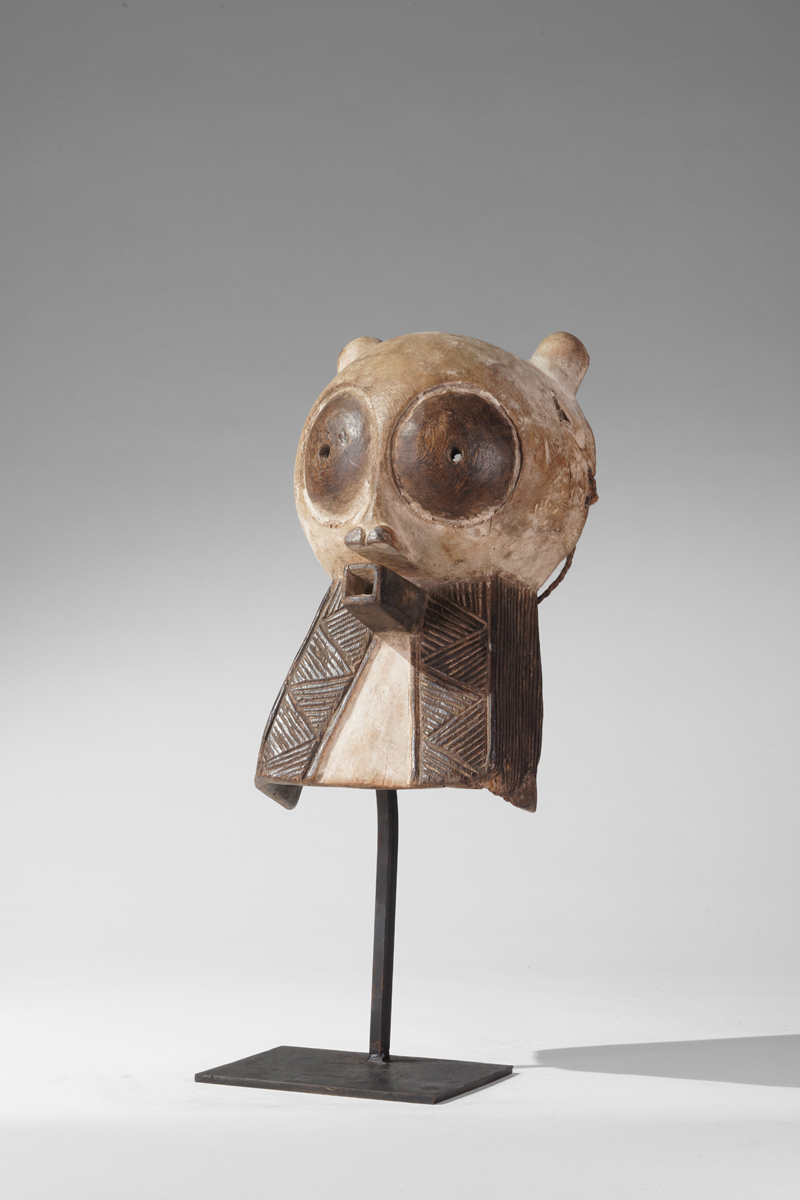 |
 A Luba owl mask, DRC, Tanganyika region, Moyo Village. Incl. stand
The Luba owl mask, associated with the Luba people of the Tanganyika region in southeastern Democratic Republic of Congo, is a rare and symbolically rich form of African ritual art. Unlike the more commonly encountered Luba sculptural traditions—such as memory boards (lukasa), stools, or figures—the owl mask reflects a more esoteric layer of Luba spiritual and political thought.
In Luba cosmology, the owl is a powerful symbol associated with clairvoyance, mystery, and nocturnal wisdom. It is often linked to initiated knowledge, ancestral communication, and the ability to see what is hidden from ordinary view. The owl is also considered an ambiguous figure—both feared and respected—since it is active at night, a time associated with the spiritual realm. In this sense, the owl serves as a mediator between the world of the living and the world of spirits or ancestors.
Luba owl masks are rare and typically associated with royal or elite initiation societies, where they are used in masked performances that reinforce social cohesion, political order, and sacred knowledge. The masks are usually carved from wood and painted with white kaolin, symbolizing purity and ancestral presence. The features are highly stylized: large circular eyes, a beaked nose, and geometric patterns suggest the owl’s penetrating vision and supernatural power.
The performances in which owl masks are used are highly restricted. Only certain individuals—often diviners, ritual specialists, or members of royal courts—are permitted to witness or take part in the ceremonies. These events often involve songs, drumming, and movements that reenact mythological narratives or political allegories tied to Luba kingship and moral order.
Art historian Mary Nooter Roberts, a leading expert on Luba art, explains:
“Luba masks, including rare forms such as the owl mask, embody a visual language of esoteric authority. Their appearance in ritual performance is not entertainment but a revelation—each movement, symbol, and form activating complex layers of memory, lineage, and divine sanction. The owl, with its ability to see in darkness, represents the power of vision beyond the visible—a core principle in Luba political and spiritual systems.”
(Memory: Luba Art and the Making of History, Roberts and Roberts, 1996)
Sotheby's
sold
Height: 28 cm / 43 cm incl. stand
Weight: 1,4 kg incl. stand |
 photo: wolfgang-jaenicke.com, for more information, please write us an e-mail with the identification number of the photo identification no. CAB02073.jpg
photo: wolfgang-jaenicke.com, for more information, please write us an e-mail with the identification number of the photo identification no. CAB02073.jpg |
|
